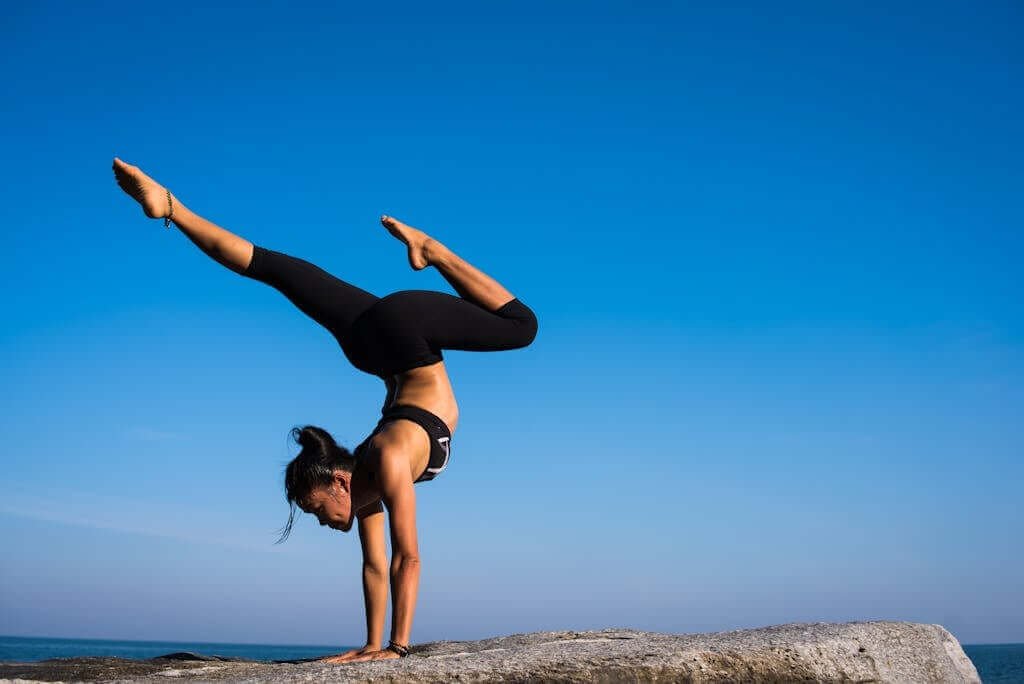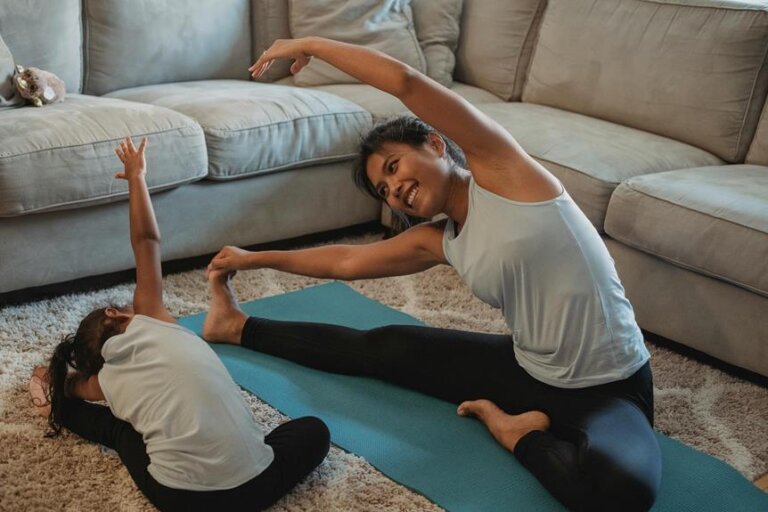Yoga for Seniors: Poses and Practices for Flexibility and Balance
As you navigate the golden years, staying active and maintaining mobility become key priorities. Have you ever considered incorporating a gentle yet effective practice that can enhance your flexibility and balance?
The practice of yoga offers tailored poses and techniques specifically designed to support seniors in their journey towards improved physical well-being. Discover how these mindful movements can help you gracefully navigate the changes that come with aging, fostering a sense of strength and stability that resonates beyond the mat.
Benefits of Yoga for Seniors
Indulging in regular yoga practice can significantly enhance the overall well-being of seniors, both physically and mentally. The gentle movements and breathing techniques of yoga can improve flexibility, balance, and strength, leading to a reduced risk of falls and injuries. As a senior, participating in yoga can also help alleviate joint pain, increase range of motion, and promote better posture. Moreover, the meditative aspect of yoga can bring a sense of calmness, reduce stress levels, and enhance mental clarity.
In addition to the physical benefits, engaging in yoga can foster a sense of community and connection among seniors. Group yoga classes provide an opportunity to socialize, make new friends, and combat feelings of loneliness or isolation. The supportive environment of a yoga class encourages seniors to challenge themselves, build confidence, and embrace a positive mindset. Overall, incorporating yoga into your routine can lead to a healthier and more fulfilling lifestyle in your golden years.
Gentle Poses for Flexibility
Enhancing your flexibility as a senior through gentle yoga poses can have a profound impact on your overall physical well-being. Incorporating poses like Cat-Cow stretch, seated forward bend, and gentle spinal twists into your yoga routine can help increase your range of motion, reduce stiffness, and improve circulation.
Cat-Cow stretch involves moving between arching your back like a cat and dropping your belly towards the floor like a cow, promoting flexibility in your spine. The seated forward bend stretches your hamstrings and lower back, enhancing flexibility in these areas crucial for daily movements. Gentle spinal twists help release tension in your back muscles, improving flexibility and mobility.
These gentle poses not only enhance your flexibility but also support joint health, reduce the risk of injuries, and promote relaxation. Remember to listen to your body, breathe deeply, and move slowly into each pose to avoid strain. By incorporating these gentle yoga poses into your routine, you can experience increased flexibility and a greater sense of well-being as a senior.
Balancing Poses for Stability
To improve your stability as a senior, incorporating balancing poses into your yoga practice is essential. Balancing poses help enhance core strength, focus, and coordination, which are crucial for preventing falls and maintaining independence.
Tree pose, where you stand on one leg with the sole of the other foot against your inner thigh, is excellent for improving balance. Hold onto a chair or wall for support if needed.
Another beneficial pose is the Warrior III pose, which involves extending one leg back while leaning forward, creating a straight line from your head to your extended heel. This pose challenges your balance and strengthens your leg muscles.
Additionally, the Eagle pose, where you wrap one leg around the other while balancing on one foot, can help improve stability and concentration. Remember to breathe deeply and focus on a fixed point to enhance your balance during these poses.
Practice these balancing poses regularly to boost your stability and overall well-being as a senior.
Breathing Techniques for Relaxation
Breathing techniques play a crucial role in promoting relaxation during your yoga practice as a senior. By focusing on your breath, you can calm your mind, reduce stress, and enhance your overall well-being.
One effective breathing technique to try is diaphragmatic breathing, also known as belly breathing. To practice this, sit or lie down comfortably, place one hand on your chest and the other on your abdomen. Inhale deeply through your nose, feeling your abdomen rise as you fill your lungs with air. Exhale slowly through your mouth, feeling your abdomen fall. Repeat this process several times, allowing each breath to be slow and controlled.
Another beneficial technique is alternate nostril breathing. This practice involves breathing in through one nostril while closing the other with your finger, then switching nostrils as you exhale. This helps balance the flow of energy in your body and promotes a sense of calmness.
Incorporating these breathing techniques into your yoga routine can help you relax, release tension, and fully enjoy the benefits of your practice.
Creating a Safe Practice Routine
As you establish your yoga practice routine as a senior, prioritizing safety is essential to ensure a fulfilling and injury-free experience. Begin by consulting with your healthcare provider to ensure that yoga is suitable for you based on your health conditions and physical abilities. When selecting a class or instructor, opt for those specialized in teaching seniors or gentle yoga to cater to your needs.
As you start your practice, listen to your body and respect its limits. Avoid pushing yourself too hard into poses and always prioritize proper alignment over depth. Use props like blocks, straps, or chairs to support your practice and modify poses as needed. Remember to warm up before diving into more challenging poses and conclude your practice with a cool-down to relax your muscles and prevent stiffness.
Lastly, stay hydrated throughout your practice, take breaks when needed, and don't hesitate to ask for assistance or clarification from your instructor. By incorporating these safety measures into your routine, you can enjoy the benefits of yoga while minimizing the risk of injuries.
Frequently Asked Questions
Can Seniors With Limited Mobility Still Benefit From Practicing Yoga?
Yes, seniors with limited mobility can still benefit from practicing yoga. Gentle movements and modified poses can improve flexibility, balance, and overall well-being. Consistent practice tailored to your needs can help enhance your physical and mental health.
How Often Should Seniors Practice Yoga to See Improvements in Flexibility and Balance?
Feeling the urge to yoga more, huh? Well, you'll want to practice regularly, friend. Aim for at least 3 times a week to really feel the benefits of improved flexibility and balance. Keep at it!
Are There Specific Yoga Poses or Practices That Can Help With Chronic Pain Management in Seniors?
To manage chronic pain as a senior, try gentle yoga poses like cat-cow stretch, child's pose, and seated twists. Breathing exercises and meditation can also help alleviate discomfort. Consistent practice can gradually improve your pain management.
How Can Seniors Adapt Yoga Poses to Accommodate Any Physical Limitations or Injuries They May Have?
You can adapt yoga poses by modifying movements, using props, and focusing on your body's feedback. Listen to your limits, communicate with your instructor, and prioritize safety over pushing too hard. Stay mindful and enjoy your practice.
Are There Any Specific Props or Equipment That Seniors Should Consider Using During Their Yoga Practice to Enhance Their Experience?
Consider using props like blocks, straps, and bolsters to enhance your yoga practice. These tools can help you achieve proper alignment, provide support for poses, and increase accessibility, making your experience more enjoyable and beneficial.
Conclusion
Now that you've learned about the benefits of yoga for seniors, it's time to put these gentle poses and practices into action. Remember, yoga can help improve flexibility, balance, and overall well-being as you age.
By incorporating these techniques into your routine, you can feel more relaxed, stable, and confident in your body. So why wait? Start your yoga journey today and experience the positive impact it can have on your health and happiness.






